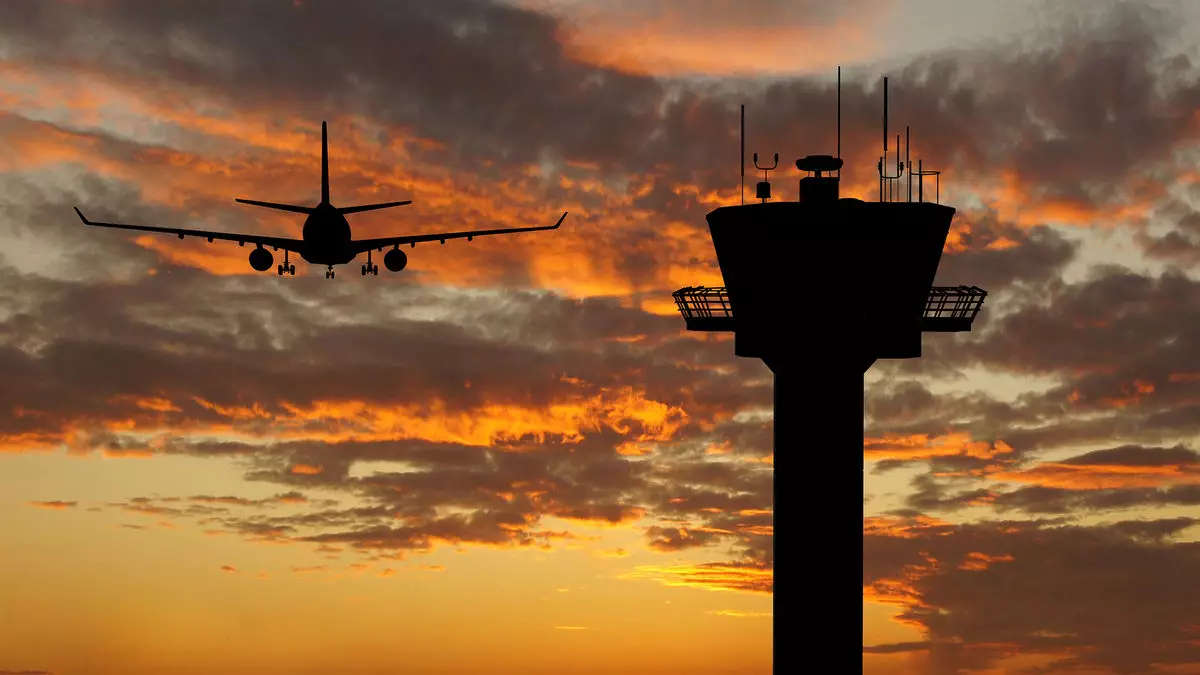The recent signing of the budget and policy bill by President Trump marks a pivotal moment in the evolution of U.S. aviation infrastructure. At its core, the legislation allocates $12.5 billion to overhaul the antiquated air traffic control (ATC) system—an infrastructure that has long languished behind technological advancements. While this infusion is substantial, it merely scratches the surface of what is necessary to truly modernize and future-proof the nation’s skies. Industry stakeholders, ranging from airports to airlines, recognize this initial move as a catalyst, but also acknowledge that a significantly larger, sustained investment is essential to realize a comprehensive transformation.
This early financial commitment is emblematic of an acknowledgment that our current ATC systems are ill-equipped to handle burgeoning traffic and technological complexities. Upgrading telecommunications infrastructure, replacing radar systems, and developing next-generation control centers are no small feats. The bill’s allocations—$4.75 billion for communication upgrades and $3 billion for radar replacements—are critical, yet they are only the starting point. The industry’s projections estimate that at least $31 billion in total investments will be needed, signaling a considerable gap that must be bridged with future funding and political will.
The ambitious four-year timeline set by Transportation Department Secretary Sean Duffy amplifies the urgency but also intensifies skepticism about whether such a rapid overhaul is feasible. Achieving technological modernization at this speed demands not only funding but also meticulous planning, efficient execution, and robust workforce development. Stakeholders such as the Modern Skies Coalition emphasize that these investments are crucial for maintaining safety, efficiency, and the continued competitiveness of the U.S. aviation sector in a rapidly evolving global landscape.
Industry’s Mixed Emotions: Optimism Meets Realistic Caution
While praise for the bill’s initial funding is widespread, a tempered realism persists within the aviation community. Airlines for America CEO Nick Calio lauded the boldness of the administration, emphasizing that few leaders have dared to tackle this sprawling undertaking. However, he tempered optimism with a call for additional support, particularly around staffing and advanced technology—elements vital to translating financial investment into tangible progress.
This cautious optimism underscores a familiar truth: technological upgrades alone are insufficient without the human infrastructure to support them. Staffing shortages, training issues, and operational efficiencies remain persistent challenges that threaten to undermine efforts. The industry’s call for more funding reflects a realization that sustained, incremental investment—beyond the initial rollout—is necessary to prevent the system from stagnating or becoming obsolete again.
Historically, programs like NextGen, initiated in 2007, illuminate the difficulties inherent in large-scale modernization. Progress has been slow, wrapped in bureaucratic hurdles and budget overruns, fostering skepticism about whether current plans will lead to meaningful change within the stipulated timeframe. Yet, recent incidents—such as the midair collision near Washington D.C. and ATC outages at Newark—have acted as wake-up calls. These events have galvanized political and industry support, underlining the urgent need for comprehensive upgrades that can prevent such failures from recurring.
Broader Implications: Economic, Environmental, and Political Dimensions
The legislation’s broader impacts extend well beyond air traffic management. It demonstrates a strategic attempt to bolster national security, stimulate economic growth, and support environmental sustainability. For instance, the bill’s extension of tax credits for sustainable aviation fuels until 2029 signals a deliberate effort to propel the aviation industry toward greener practices. Despite some political resistance to climate initiatives, support from farmers and industry allies has ensured these credits survive, facilitating the production of sustainable fuels derived from corn ethanol and soybean oil.
This emphasis on sustainable aviation fuel is not merely environmentally motivated but also economically strategic. It positions the U.S. as a leader in green aviation—an increasingly critical facet as global pressure mounts to reduce carbon emissions. By investing in renewable fuel production, the industry aims to balance rapid mobility growth with climate commitments, fostering innovation and creating new economic opportunities.
Politically, the bill demonstrates a nuanced approach—favoring substantial infrastructure upgrades without alienating key political constituencies. The bipartisan support, especially from agricultural interests, indicates that well-placed investments can serve multiple goals: modernizing critical systems, boosting rural economies, and advancing sustainability. This balancing act, though complex, signals a pragmatic approach to tackling the multifaceted challenges facing the aviation industry.
In essence, this legislative move reflects a deliberate quest not just for technological renewal but for a strategic overhaul of the entire aviation ecosystem. It embodies the recognition that safety, efficiency, sustainability, and economic vitality are deeply intertwined, demanding ambitious and sustained efforts to craft a resilient, innovative future for U.S. skies.


Leave a Reply